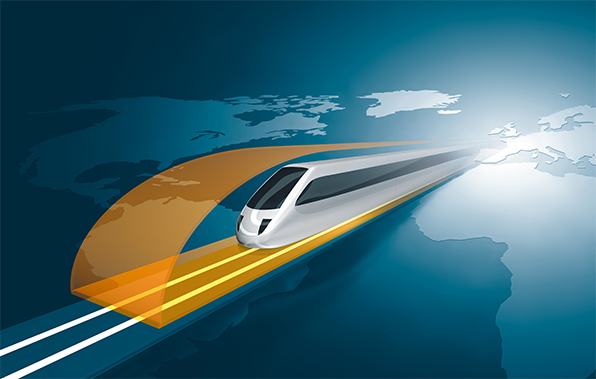One of the main problems of rail transport is that an increase of the rail network’s capacity is very expensive since building new railways requires huge investments. A few weeks ago, the German Ministry of Transport introduced a study concerning rail transportation. The study concludes that modern signaling and control technology, such as the European Train Control System (ETCS), can increase the capacity of the network for passenger and freight transport by one fifth (Reuters, 2018).
What is the idea of ETCS?
The ETCS was originally designed to replace multiple incompatible legacy train control systems in the European Union’s rail network that used different operational procedures. The need occurred as a result of the ongoing integration of the European Union which lead to more cross border running trains. Additionally, liberalization of national railway markets increased the demand for a unified signal and control system (NSW, 2018).
So how does ETCS technology work?
ETCS technology uses a mix of electronic tracking and GPS location information and is implemented with standard trackside and train-borne equipment. Currently, ETCS Level 2 is the most advanced deployed application of ETCS technology. It includes wireless communication of movement in real time to the train conductor by using onboard computers that illustrate the information on a driver machine interface (NSW, 2018).
For further details about the functioning of the technology take a look at the following video: https://www.youtube.com/watch?v=yZNcJ1OZI8I
What will be the impact of the technological advancements?
ETCS will reduce maintenance costs of rail networks, since it makes line-side signals obsolete (Goodall & Dixon, 2015). Moreover, the technology will improve safety, services and operational availability. The implementation of ETCS also builds the basis for future technologies (NSW, 2018).
What is the outlook of ETCS technology?
The ETCS technology has the potential for taking over control from the driver in the long term. But until this degree of automation can be realized it will take some time due to network complexity that require investments (Goodall & Dixon, 2015). How long this development will take exactly is not easy to answer. What is your opinion on that? When do you think full automation will be possible with ETCS technology?
References
Goodall, W., & Dixon, S. (2015). Transport in the Digital Age Disruptive Trends for Smart Mobility, (March). Retrieved from https://www2.deloitte.com/content/dam/Deloitte/uk/Documents/bps/deloitte-uk-transport-digital-age.pdf
NSW. (2018). The impact of introducing the European Train Control System on Sydney train crews. Retrieved from https://www.transport.nsw.gov.au/system/files/media/documents/2018/FW 18-02 Impact of ETCS on Train Crew Scheduling WCAG.pdf
Reuters. (2018). So will die Bahn mehr Züge auf die Schiene bringen. Gründerszene. Retrieved from https://www.gruenderszene.de/automotive-mobility/so-will-die-bahn-mehr-zuege-auf-die-schiene-bringen

